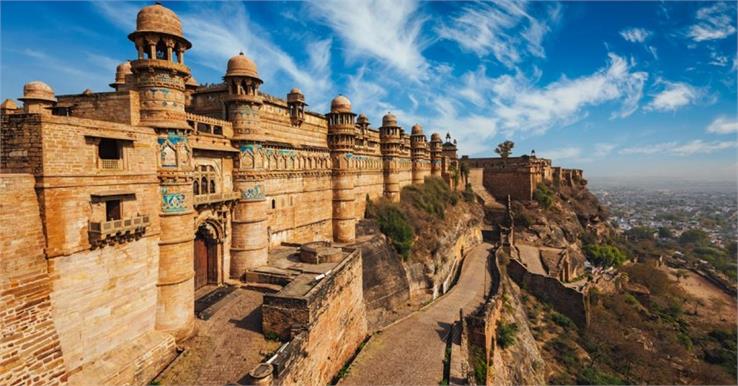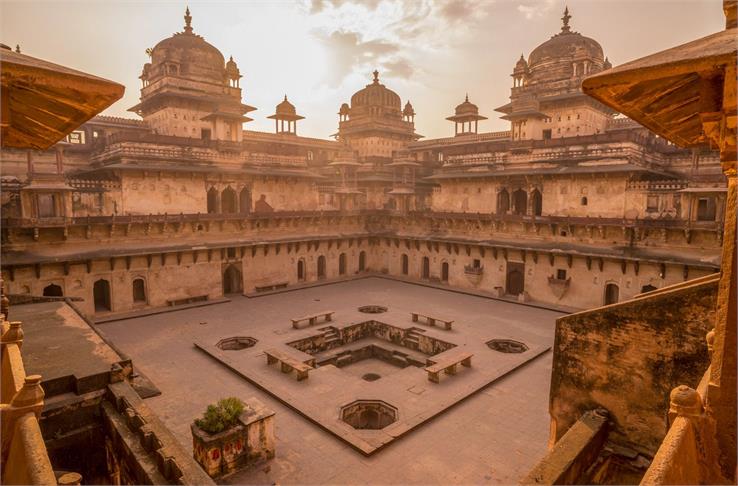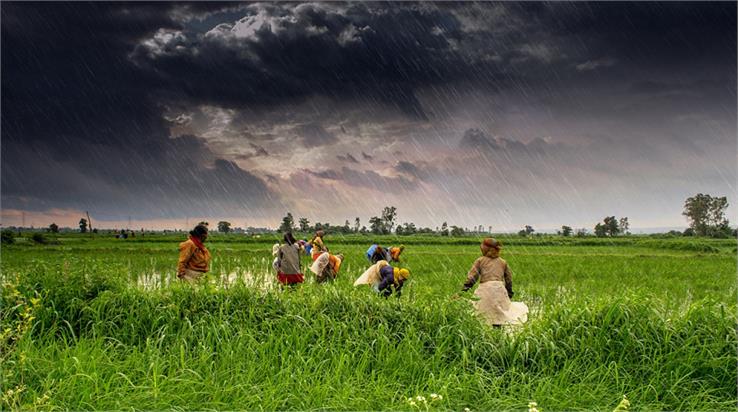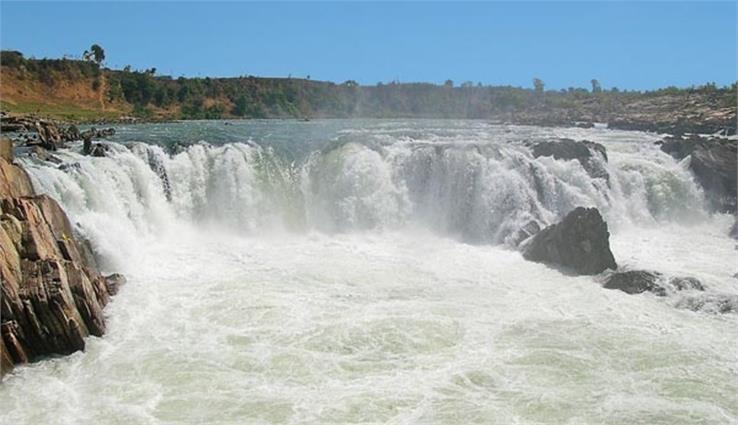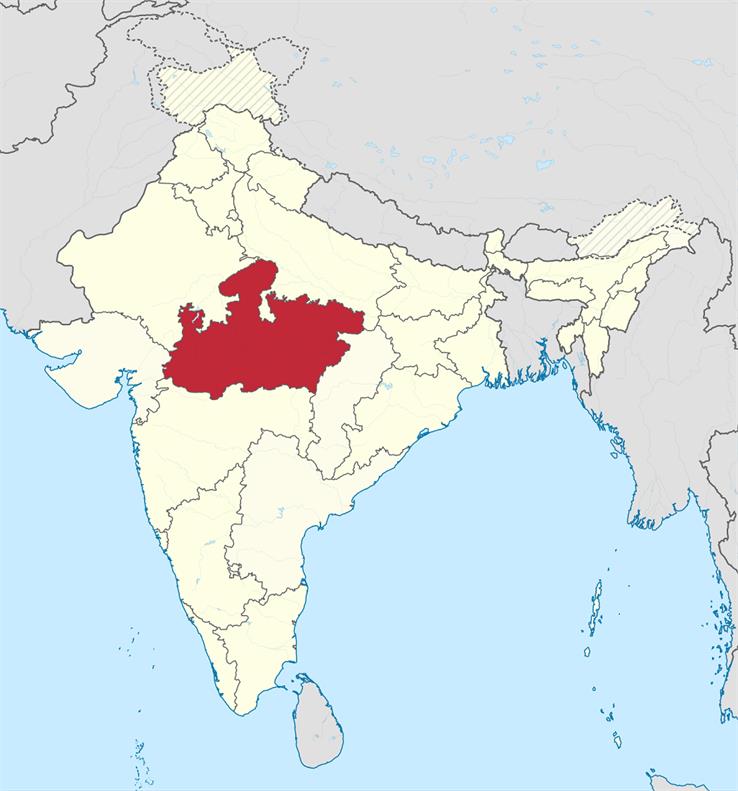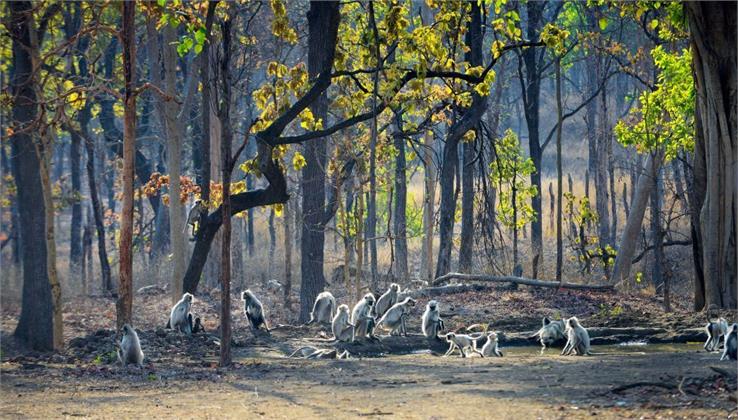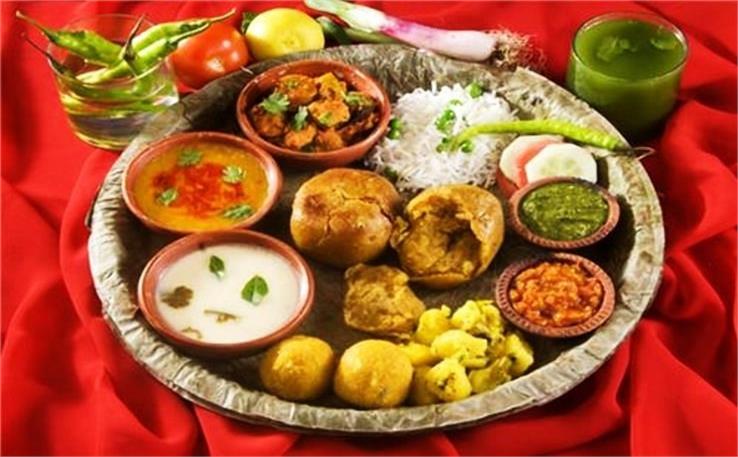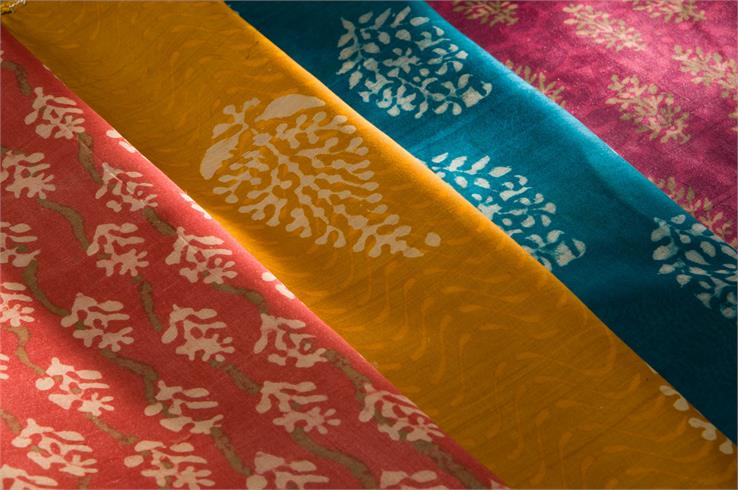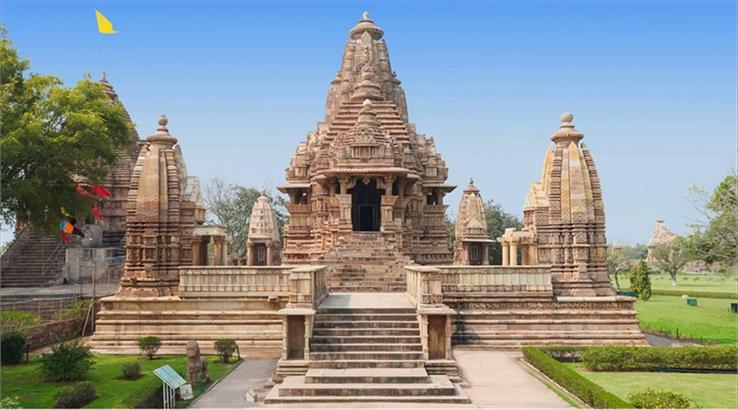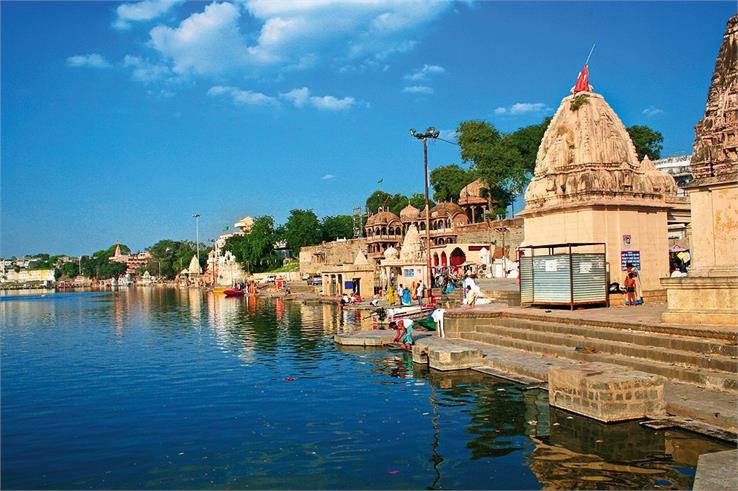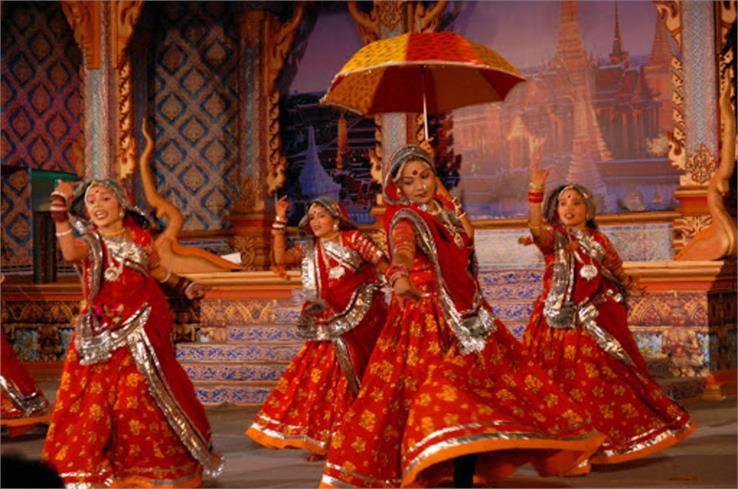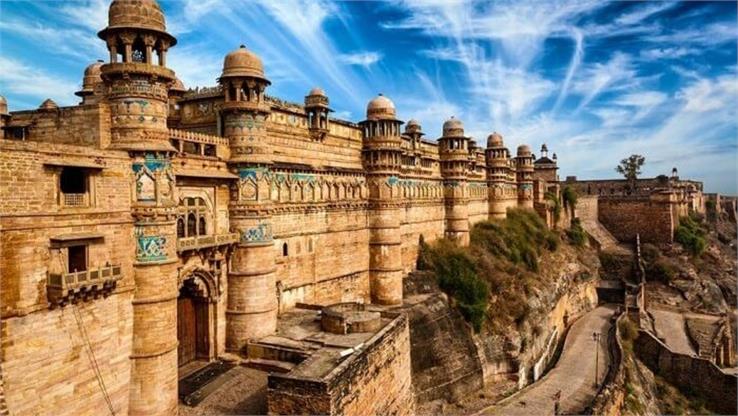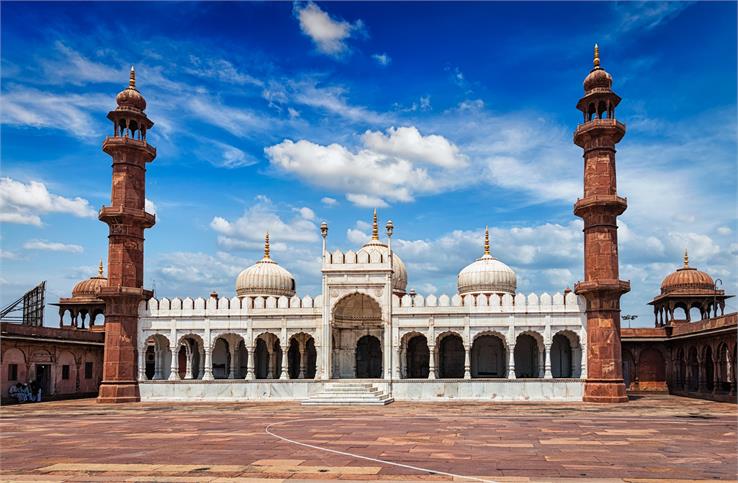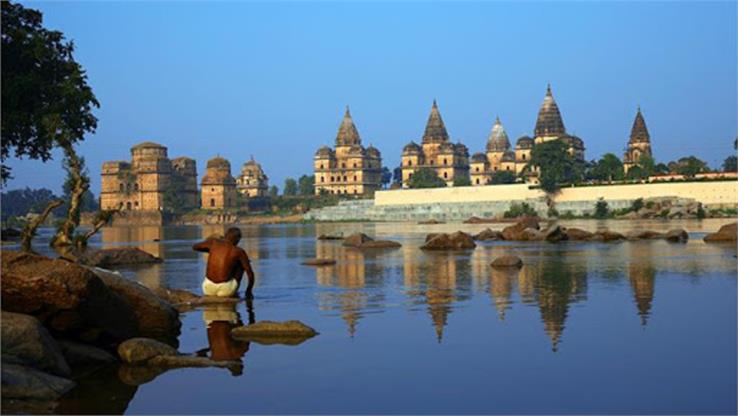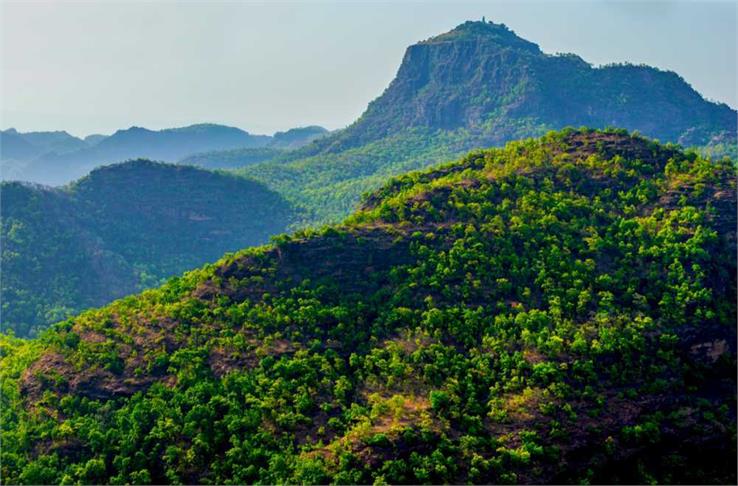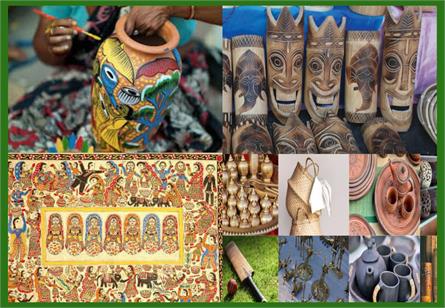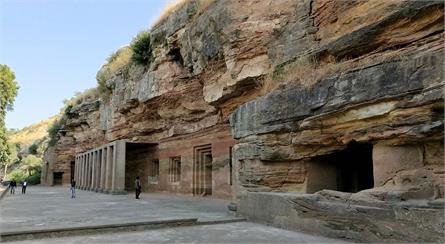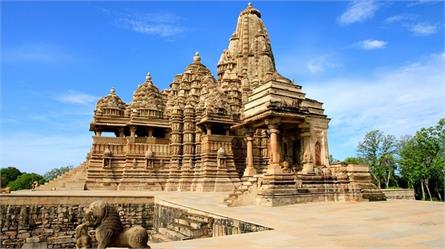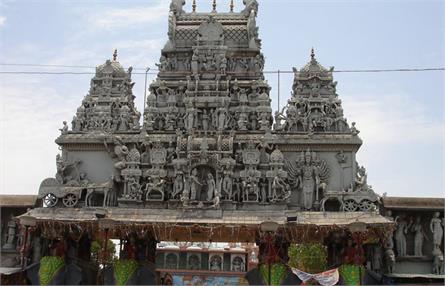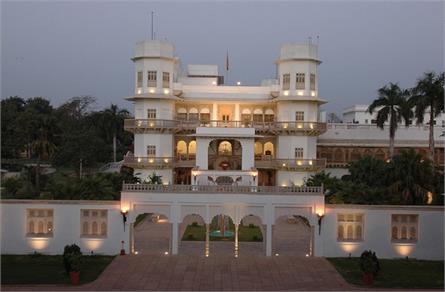Madhya Pradesh - The Heart of India
Popularly known as the Heart of India, Madhya Pradesh is situated in the central part of the country. Madhya Pradesh had the distinction of being the largest state in the country before Chhattisgarh became a separate state in November 2000.
Presently, Madhya Pradesh is the second-largest state in India in terms of area. Geographically it occupies a central place in the country. Due to its geographical location in the middle of India, it is named as Madhya Pradesh, the literary meaning of Madhya is ‘in the middle.' This state was named Madhya Pradesh, which was once known as 'Madhya Bharat.'
History
The history of Madhya Pradesh dates back to the time of great Mauryan king Ashoka. Till 300-500 AD, the largest part of central India came under the Gupta Empire. In Madhya Pradesh, many remnants of Indian historical culture, including stone paintings, stones, and metal tools, have been found in rivers, valleys, and other areas. Avanti was the earliest existing state of present Madhya Pradesh, with its capital Ujjain. Situated in the western region of Madhya Pradesh, this state was part of the Mauryan Empire (4th to 3rd century BC), which later came to be known as Malwa.

Sunga (185 to 73 AD), ruler of Eastern Malwa ruled over Madhya Pradesh from the second century AD to the 16th century. Satavahanas of Andhra ruled around the first century AD to the third century, Kshatrapa from second to the fourth century, Nag from second to fourth, had ruled the state. The Gupta Empire ruled North of the Narmada River of Madhya Pradesh. It was the place of the power struggle of Hunas and Kalchuris, and later the Kalchuris ruled Malwa for some time. Harsha, the ruler of northern India, captured Malwa in the sixth century.
Must Read - Famous Ancient Caves Of Madhya Pradesh, India
Kalchuri became powerful again in the 10th century. Kalchuri's contemporaries were Parmar of Dhar, Kachwaha in Gwalior and Chandela in Khajuraho, 160 km south-west of Jhansi. Later the Tomars ruled Gwalior and the tribal Gonds. Muslim invasions began in the 11th century. Sultan Shamsuddin Iltutmish in 1231 AD annexed the Hindu princely state of Gwalior. In the 14th century, the Khilji Sultans devastated Malwa. After this, the Mughal ruler Akbar (1556–1605) annexed it into the Mughal Empire. In the early 18th century, the Maratha power ruled Malwa and by 1760 AD a large tract of land, now Madhya Pradesh, came under the rule of the Marathas. With the defeat of Peshwa in 1761 AD, the rule of the Holkar dynasty was established by Scindia (Hindu Maratha dynasty) in Gwalior and Indore in the south-west.
Madhya Pradesh was formed by the British Indian province of Central Provinces and Berar after the independence of India.
Geography

The geography of the state mainly includes its location on the earth, region and region-wise parts, rivers, weather, soil, crops, topography, fauna, and flora. Madhya Pradesh falls in Central India with a geographical location of 22.42 degrees North and 72.54 degrees east. Madhya Pradesh shares its borders with Uttar Pradesh in the north, Maharashtra in the south, Chhattisgarh in the east, Gujarat in the west, and Rajasthan in the northwest.
It is the second-largest state in India, covering about 308,252 sq km of the total area of the country. The political boundary of Madhya Pradesh was re-demarcated in the year 2000 after the separation of its northern districts for the creation of Chhattisgarh. This state is surrounded by borders of Uttar Pradesh, Jharkhand, Maharashtra, Rajasthan, Gujarat, Bihar, and Chhattisgarh.
1. Geological Structure
Madhya Pradesh is at an altitude of 90 to 1200 meters. The land in the northern part rises to the north, and the southern part rises towards the west. The mountain ranges include the Vindhya and Kaimur mountain ranges up to 457 meters in the west and north and the Satpura, Mahadev mountain ranges of more than 914 meters in the south. Located near Pachmarhi in South-Madhya Pradesh, Dhupgarh peak (1350 m) is the highest peak in the state. Malwa plateau (about 457 to 609 m) is located in the northwest of the Vindhya mountain range. The plateau of Malwa is in the north from the Vidya mountain range. To the east of the Malwa plateau lies the Bundelkhand plateau, which joins the Gangetic plain of Uttar Pradesh.
2. Rivers of Madhya Pradesh

The longest river in Madhya Pradesh is the Narmada, and its tributaries are Tawa, Shakkar, Sonbhadra, Banjar river, Machna, and Denwa. The Tapti River flows parallel to the Narmada and also flows through the Rift Valley. The Narmada River is considered to be quite sacred in India and is also worshiped in the area. It is also the primary source of water in the state.
Climate
The climate of Madhya Pradesh depends on the monsoon. Summers are sweltering, dry, and hot winds blow during this time. The state's average temperature is 29 degrees. Temperatures in some parts reach 48 degrees. Winters are pleasant and dry. There is proper rainfall in December and January, which is related to tropical disturbance occurring in the northwestern part of the state. The average annual rainfall is 1,117 mm. Generally, the amount of rainfall decreases to 60 inches in the west and north. The average rainfall in the Chambal Valley is less than 30 inches every year.
Also Read - 8 Famous Temples in Indore
Demography
Madhya Pradesh, also known as MP is located in the heart of India. The capital city is Bhopal, while the largest city is Indore. Madhya Pradesh is the sixth-largest state in India, in terms of population. The population of Madhya Pradesh is 7.33 crores. Jabalpur is considered as an important commercial center of the state.
Economy and Infrastructure
Gross State Domestic Product (GSDP) of Madhya Pradesh was $ 84.27 billion in the financial year of 2014-15. The per capita income was $ 871,45 in the year 2013-14 and ranks sixth from last in the country. The annual growth rate of the state between 1999 and 2008 was meager (3.5%). Subsequently, the state's GDP growth rate has improved significantly and grown by 8% and 12%, during 2010-11 and 2011-12, respectively.
Agriculture is the basis of Madhya Pradesh's economy. More than 50% of the state has an agricultural area, and the main cultivable area can be viewed in the Rewa Valley, Chambal Valley, and plains of Chhattisgarh. The Narmada Valley, with alluvial soils created by the river, is another fertile area. The state is the largest soybean producer in India. The state is also the largest opium producer that grows in Mandsaur district in the west and 'Marijuana' in the southwest district of Khandwa.
Agriculture

Agriculture is the mainstay of the state's economy as 72.37 percent of the state's population lives in rural areas and is dependent on agriculture. About 49 percent of the state's land is cultivable. The net sowing area was around 15,351 lakh hectares in 2014-15, and the total grain production was 21,006 MTs. 'National Horticulture Mission' has been implemented in 20 districts. A separate department named Horticulture and Food Processing Department has been formed. Chambal, Malwa Plateau, and Rewa Plateau have arable lands. The Narmada valley is a fertile area covered with alluvial soil brought by the river. The specialty of agriculture in Madhya Pradesh is the use of a traditional method of agriculture. Only 15 percent of the arable land is irrigated, the state's agriculture is dependent on rainfall, and farmers often face low amounts of moisture due to drought and red-yellow soil. Irrigation in Madhya Pradesh is mainly from canals, wells, village ponds, and lakes.
The principal crops are rice, wheat, Sorghum (Jowar), pulses (legumes like gram, beans, and lentils) and peanuts. Rice is mainly grown in areas with high rainfall. Wheat and Jowar are high in western Madhya Pradesh. Other crops include linseed, sesame, sugarcane, and Sorghum-millet grown in hilly areas. The state is a producer of opium, in Mandsaur district and marijuana, in the south-western Khandwa district. Animal husbandry and poultry farming are very important in Madhya Pradesh. The state accounts for about one-seventh of the country's total livestock (cows, buffalo and sheep, and pigs).
Must Read - Top 10 Resorts and Hotels in Gwalior
Together with Rajasthan and Uttar Pradesh, 'Chambal' forms the northern boundary of the state. The land of its valley is rugged. The soil of Madhya Pradesh can be divided into two parts-
- Black soil - It is found in the southern part of Malwa plateau, Narmada valley, and some parts of Satpura. Some part of the clay soil is found there; black soil becomes waterlogged due to irrigation with heavy rain or flood water.
- Red-yellow soil - Some amount of sand remains in it, which is found in the rest of Madhya Pradesh.
Industry and Minerals
Madhya Pradesh has enrolled in the field of telecommunications, motor vehicles, information technology, and electronics. A large number of automotive industries have been established at Pithampur near Indore. The state is producing optical fiber for telecommunication systems. Bharat Heavy Electricals Ltd. in Bhopal, Note Printing Press in Dewas, Alkaloid Factory in Neemuch, Newspaper Paper Mill, and Security Paper Mill in Hoshangabad are the major public sector industries established in the state.
- Last year, the state produced 12.49 lakh metric tonnes of cement.
- A freight aircraft complex is being set up soon in Pithampur.
- Special Economic Zone in Indore is set up by the Govt. of India, and FDI is being encouraged by implementing the overall economic development policy. The state has announced an industrial incentive policy to provide attractive discounts to attract investment. So far, investment proposals worth Rs. 5200 crores have been received, indicating the desire to set up industries.
- The National Automotive Testing, Research and Development Project has been approved by the government at Pithampur in Dhar district.
- The state government has implemented a new information technology policy to encourage private investment in the field of information technology.
The state occupies a special place in the field of mineral production, where 5312.65 crores worth of minerals were produced in the year 2005-06. There are 21 types of minerals extracted in the state. Dolomite production was 128 thousand metric tons, diamond production was 44149 thousand carats, and limestone was 25865 thousand metric tons in 2006. On the other side, bauxite production, copper ore production, and coal production remained 87 thousand million metric tons, 1706 thousand million metric tons, and 54000 thousand million Metric tons, respectively. The state is famous for traditional handicrafts of Chanderi, Maheshwar, and handloom fabrics. Hinglajgarh Parmar, located in Mandsaur district of Madhya Pradesh, is renowned as a specialized center of the sculpture.
Government and Politics

The state of Madhya Pradesh is made up of 51 districts. By region, it is the largest state after Rajasthan. The government of Madhya Pradesh is made up of executive, legislative, and judiciary. The governor heads the executive branch of the state. The head of the state is the governor, like other states. The President nominates the governor after consulting the Central Government.
Forestry
A small percentage of Madhya Pradesh has permanent pastures or grasslands. Major forest areas include the Vindhya mountain range, the Kaimur hills, the Satpura mountain range, the plateau of Baghelkhand, and the Dandakaranya region. Important trees are Teak, Sal, Bamboo, Salai, and Tendu Leaves. Tendu leaves are used for making bidis, whose famous centers are Jabalpur and Sagar. Wild animals are littered in the forests, such as tigers, leopards, wild bull, chital, bears, wild buffalo, sambar and blackbuck. Many species of birds are also found here.
National Park and Wildlife Sanctuary
Wildlife tourism includes forests reserved for animals, wildlife sanctuaries, and national parks which are found greatly in Madhya Pradesh. Wildlife tourism is a pleasing activity for tourists as it introduces the wildlife resources of the state. This also includes a short walk to national parks to get an idea of the natural habitat of the animals.
Several national parks and wildlife sanctuaries of the state:

- Kanha National Park
- Madhav National Park
- Panna National Park
- Carrera Bird Sanctuary
- Bori Wildlife Sanctuary
- Chambal Sanctuary
Education
According to the 2001 census, the literacy rate has increased to 64.11 percent as compared to 44.67 percent in 1991. The state has schools for primary, secondary, and higher education as well as for polytechnic, industrial arts, and crafts schools. Madhya Pradesh has many universities. The oldest and most famous among them are Sagar and Ujjain. Jabalpur also has an agricultural university. Bhopal also has a Journalism and Public Relations Education Institute.
The education system of Madhya Pradesh is very developed and commendable. The entire school education of Madhya Pradesh is divided into three levels - primary, secondary, and higher. Moreover, one-third of the total population of Madhya Pradesh is educated. The oldest schools of Ujjain and Sagar are known as the best schools in the whole western region because of the quality of education. Recently, various workshops and training sessions were started in the education system of Madhya Pradesh so that those who left school could be brought back to education.
Language
As Madhya Pradesh is designated as the heart of India, it is natural that all the popular dialects of Madhya Pradesh will be in Hindi. Hindi is the official and most spoken language. Eastern Hindi represents Awadhi and Bagheli dialects and is spoken in Baghelkhand, Satpura, and Narmada Valley. Bundeli is a dialect of Western Hindi and is spoken in the intermediate and northwestern districts of Madhya Pradesh. Bhili and Gond speak the Gondi language, where Marathi is the second most spoken dialect. Urdu, Oriya, Gujarati, and Punjabi speaking people are also in large numbers here. Apart from this, Telugu, Bangla, Tamil, and Malayalam are also spoken.
Also Read - Most famous handicrafts of Madhya Pradesh
Transportation
1. Roadways
The total length of roads in Madhya Pradesh is 73,311 km. The length of the national highways is 4,280 km, and the range of the provincial highways is 8,729 km. The construction and improvement of roads in the state begin on a large scale, and about 60 thousand km of roads will be constructed and improved. The year 2005 was celebrated as the 'Year of the Roads.'
2. Railways
The central rail route connecting North India with South India passes through Madhya Pradesh. The main junctions are Bhopal, Bina, Gwalior, Indore, Itarsi, Jabalpur, Katni, Ratlam, and Ujjain in the state. The regional headquarters of the railway are at Bhopal, Ratlam, and Jabalpur. The major railroad passing through the state was initially built to connect Chennai, Mumbai, and Kolkata ports with the state's hinterland.
3. Airways
The state of Madhya Pradesh is connected to other parts of India by airports and many national highways located in Bhopal, Gwalior, Indore, Jabalpur, Rewa, and Khajuraho.
Fairs and Festivals

Due to the cultural diversity of India, many fairs and festivals are celebrated in many states. Madhya Pradesh is no different. Its fairs and festivals are very popular and truly reflect the traditional values of people living in rural areas. These fairs and festivals are not limited to any particular community but are celebrated by all. These festivals attract thousands of people and give a chance to witness tribal traditions and rituals. Some of them are:
- ‘Bhagoria’ is a traditional festival of tribals of Madhya Pradesh, which is celebrated with pomp and grandeur.
- The color of local traditions is seen during the festival of Shivaratri in Khajuraho, Bhojpur, Pachmarhi, and Ujjain.
- There is a unique tradition of organizing Ramnavami in Chitrakoot and Orchha.
- 'Tansen Samaroh' of Gwalior, 'Ustad Allauddin Khan Sangeet Festival' of Maihar, 'Kalidas Samaroh' of Ujjain and 'Dance Festival of Khajuraho' are some of the famous art festivals of Madhya Pradesh.
Best time to visit
The best time to visit Madhya Pradesh is from October to March, as the weather of the state is worth visiting and cool.
Famous Food in Madhya Pradesh

Madhya Pradesh is called the heart of India which is not just because of geographical location but for its 'vibrant, delicious, and unique cuisine.' The neighboring states, especially Rajasthan, strongly influence the cuisine of MP. Rajasthan's influence can be seen in many MP recipes such as dal bafla, which is a combination of Dal baati and Chakki ki shaak.
There are many Madhya Pradesh Famous food, Which Attracts food lovers from all over the country. Some of them are below:
1. Poha
The name would have known as Poha that it is consumed in the morning breakfast. The taste of the food is accentuated by adding a scab over the sour-sweet poha as well as jalebi makes this dish more delicious. The city of Bhopal commence their morning with the unique blend of poha and jalebi, and famous Sulaimani tea together makes the breakfast outstanding.
2. Dal Bafla
Dal Bafla is one of the delicacies Madhya Pradesh famous food, which was influenced by Masoor Dal Bati in Rajasthan. The mouth-watering dish of Dal Bafla also provides a healthy dose of multiple vitamins, proteins, carbs, and fat.
3. Bhutte ka Kees
Bhutte ka Kees is one such lip-smacking dish that you will find only in Madhya Pradesh. If you go to Indore, definitely relish this unique recipe.
4. Bhopali Gosht Korma
Those who adore non-vegetarian food will love Bhopali gosht korma. To prepare the dish, mutton is cooked in spicy gravy on low heat. After tasting it, you will get a sense of tempting and delicious recipe.
Also read - The place that excels Priority with Unity
5. Biryani Pulao (Pilaf)
For those who like eating biryani, they must experience the biryani of Bhopal. The recipe for biryani in Bhopal is different, and you will surely love it.
6. Chakki ki Shaak
Hearing the name of this dish, you will definitely think twice before eating it, but it is worth to relish the flavor. Chakki ki Shaak is another dish that is inspired by the cuisine of Rajasthan and made on special occasions and parties.
7. Indore Namkeen
Namkeen of Madhya Pradesh is famous all over India. These namkeens are made from gram flour and fried in groundnut oil.
8. Mawa Bati
Mawa Bati is one of the Madhya Pradesh famous food. It looks like Gulab Jamun but is stuffed with mawa, chopped dry fruits, and cardamom powder. People have it as a dessert and make it on special occasions.
What to shop
Shopping in Madhya Pradesh has its own unique experience. While traveling to Madhya Pradesh, returning without shopping is impossible. The purchase of traditional handicrafts has its own charm in Madhya Pradesh.

Madhya Pradesh is famous for its textile products. There was a time when the artisans of the state were known for weaving magnificent muslin. The tradition is still alive in Maheshwari and Chanderi sarees. Zari work in Madhya Pradesh is also quite famous.
While shopping, the exclusive handicrafts of Madhya Pradesh will fascinate and attract towards them and the handiworks of Bastar are famous all over the world. Once it was in Madhya Pradesh, but now this area is part of Chhattisgarh. Therefore, it is very common to find Bastar handicrafts in Madhya Pradesh.
A large number of government emporiums named Mrignayani are also present in the entire state. You can also shop from small crowded streets and crossroads in Madhya Pradesh. In this way, you will experience the medieval atmosphere in shopping.
Places to visit
Madhya Pradesh is called the "Heart of India" and is the second-largest state in the country. The history, geographical location, natural beauty, cultural heritage, and the people of this state makes it one of the best tourist destinations in India. Its capital is Bhopal, which is famous as the city of lakes. Madhya Pradesh tourism offers all aspects of tourism for travelers to explore and enjoy. From seeing tigers in Bandhavgarh National Park to the statues of Khajuraho temple, you can discover the real India.
1. Khajuraho

Situated in Madhya Pradesh, the world-famous Khajuraho is known globally for its stunning temples adorned with erotic carvings. Khajuraho is a small town located in the Bundelkhand region of Madhya Pradesh, which is a magnificent specimen of Indian architecture and culture in the medieval period. The architecture of Hindu and Jain temples of Madhya Pradesh depicts a unique sort of love and zest.
2. Ujjain

Ujjain is one of the most prominent scenic spots in Madhya Pradesh which is considered to be one of the holiest cities in India. Located on the eastern bank of the Shipra River in the Malwa region, Ujjain is an ancient city of the state. The magnificent city of Ujjain is one of the four sites of Kumbh Mela in the country. Ujjain is regarded to be a highly religious place for Hindus, a large number of tourists and pilgrims arrive here. The most bizarre thing about Ujjain is the Mahakaleshwar Jyotirlinga situated in the state, which is one of the twelve Jyotirlingas of Lord Shiva.
3. Gwalior

Gwalior is a historical city in the state of Madhya Pradesh, which was founded by King Suraj Sen. Gwalior is well known for its forts, monuments, palaces, and temples. The city is surrounded by beautiful hills and greenery from all around, which shows its glorious past. The fort of Gwalior offers a panoramic view of the city. Jai Vilas Palace and Sun Temple Gwalior are some of the tourist places of Gwalior that you can never forget after seeing them. The tomb of the famous classical musician Tansen is also an important place for sightseers. A four-day Tansen Sangeet festival is organized in the city every year in the month of November/December.
4. Bhopal

Bhopal is the capital of Madhya Pradesh and an alluring tourist destination. Situated between two beautiful man-made lakes, Bhopal is a big city with a precise mix of culture, heritage, and modern life. The city is highly ornamented with majestic mosques, exhibiting classic Mughal architecture such as the Taj-ul-Masjid.
5. Orchha

Orchha is one of the best places to explore Forts and Temples of Madhya Pradesh. Situated on the banks of the Betwa River, the city is known for its forts, temples, and palaces. Fort in Orchha is famous all over the country for its charm, which adds extra beauty to the state. Apart from this, Chaturbhuj Temple, Raj Temple, and Lakshmi Temple are the main attractions of Orchha.
6. Maheshwar
Maheshwar, situated on the banks of the Narmada River, is known as the 'City of Temples'. The city has a different mythological, and historical significance as the city is mentioned in the epics of Ramayana and Mahabharata. Maheshwar was previously the capital of Holkar, the province of Queen Ahilyabai Holkar. She built many buildings in this city and beautified the city with Maratha architecture.
7. Pachmarhi

If you are a nature lover, then there is no better place to visit in Madhya Pradesh than Pachmarhi. Pachmarhi is the only hill station in Madhya Pradesh situated at an altitude of 1,067 feet, which is known as the queen of the Satpura ranges. Pachmarhi is a major tourist destination of Madhya Pradesh and is filled with myriad attractions such as China caves and beautiful monuments.
8. Mandav
Mandav is an extraordinary tourist destination of Madhya Pradesh, which is a symbol of architectural excellence achieved by the ancestors. The city conveys the pure love of Prince Baz Bahadur and Queen Roopmati.


